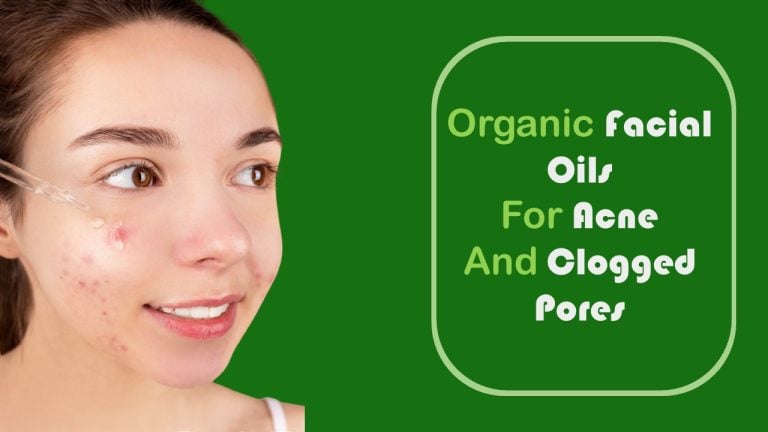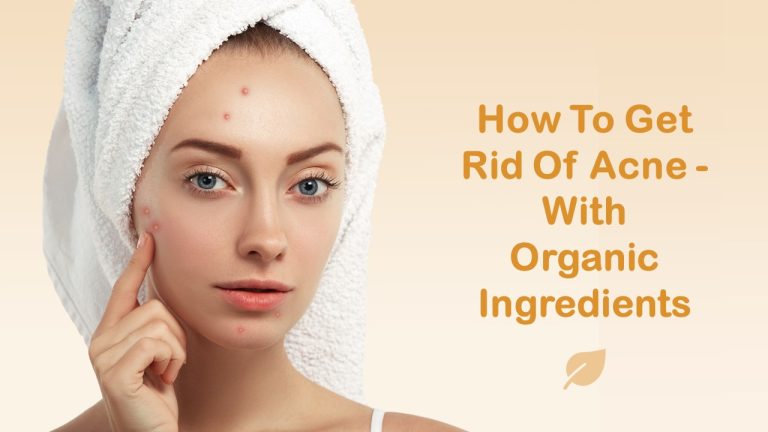
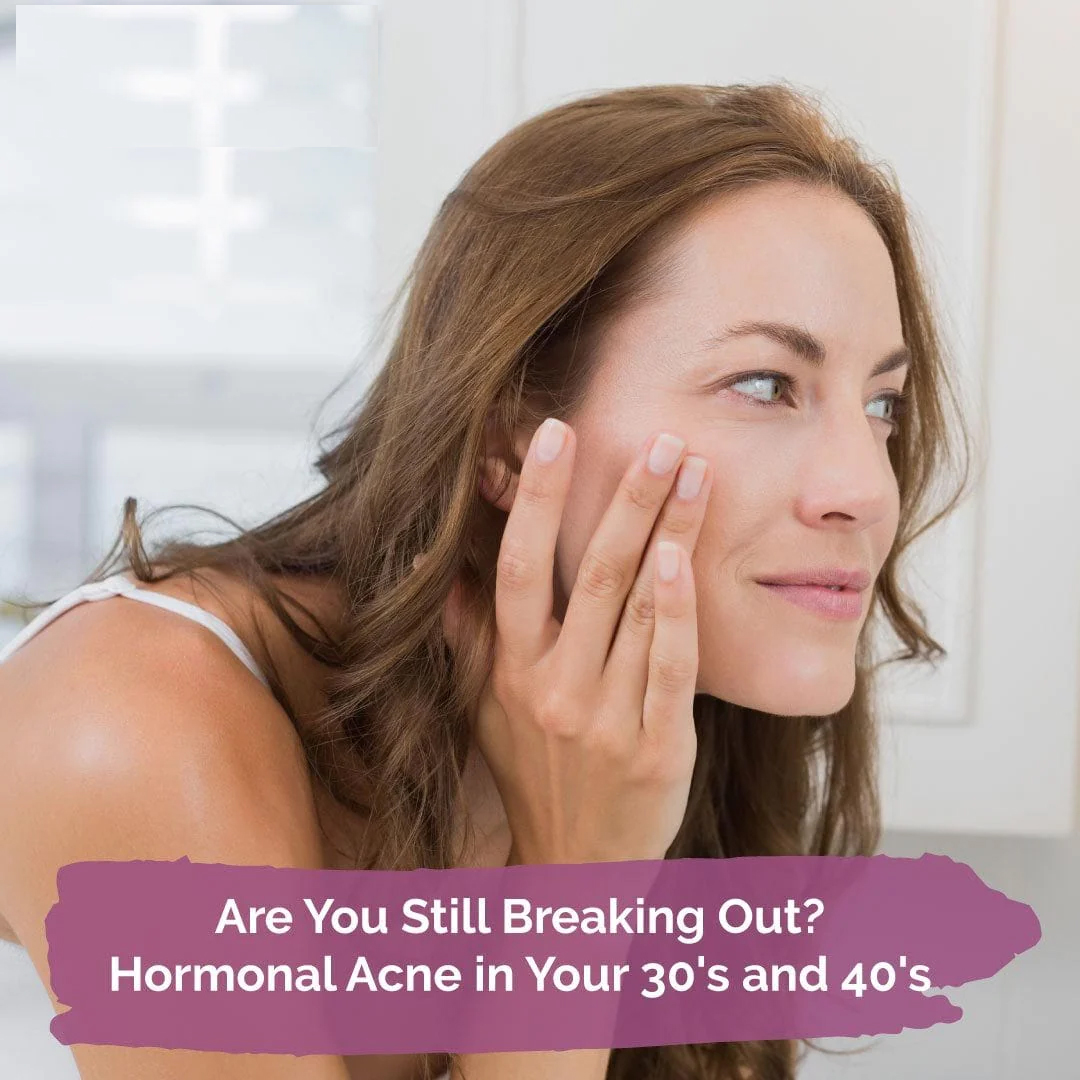
Why You Are Getting Acne in Your 40s: Causes and Solutions
Are you wondering why you are getting acne in your 40s? Acne is often associated with adolescence, but adult-onset acne can be frustrating and unexpected for many individuals. This comprehensive guide will investigate the potential sources of adult-onset acne in your 40s, including hormonal fluctuations, stress and anxiety, dietary habits, and medications.
We’ll also discuss effective treatments for managing adult acne, such as over-the-counter options, prescription medications, natural remedies and home care tips, professional treatments like chemical peels or laser therapy, and lifestyle changes that can help prevent future breakouts.
In addition to addressing the root causes of adult-onset acne and treatment options available to those experiencing it in their 40s, we will debunk some common myths surrounding this skin condition. Lastly, we guide you on when to consult a medical professional about your concerns regarding persistent or severe breakouts.
By understanding why you are getting acne in your 40s and learning how to manage it through proper skincare practices and lifestyle adjustments effectively, you can achieve clearer skin while boosting overall health.
Table of Contents:
- Hormonal Fluctuations and Acne in Your 40s
- The link between hormone fluctuations and adult-onset acne
- How estrogen levels affect your skin’s oil production
- External Irritants Contributing to Adult Acne
- Dietary Choices Impacting Adult-Onset Acne
- Identifying Root Causes Before Treating Adult Onset-Acne
- Chemical Exfoliants and Their Role in Acne Management
- Sun Protection and Adult Acne Prevention
- Lifestyle Habits That Help Prevent Adult Acne Breakouts
- Frequently Asked Questions Why You Are Getting Acne in Your 40S
- Conclusion
Hormonal Fluctuations and Acne in Your 40s
Hormonal fluctuations play a significant role in causing acne outbreaks by increasing sebum production in the skin. As estrogen levels drop during menopause or due to other hormonal imbalances, testosterone becomes more dominant, leading sebaceous glands to produce more oil while changing the pH balance of the skin, which allows bacteria proliferation.
The link between hormone fluctuations and adult-onset acne
Adult-onset acne is often caused by hormone fluctuations, especially during perimenopause or menopause when estrogen levels decrease. This change causes an increase in testosterone, which leads to increased oil production within hair follicles. The excess oil can clog pores and create an environment for bacteria growth, resulting in breakouts on your face, neck, chest or back.
How estrogen levels affect your skin’s oil production
- Estrogen: Estrogen helps maintain healthy skin by regulating sebum (oil) production. When there’s a decline in this hormone level due to age-related factors like menopause or hormonal imbalances such as polycystic ovary syndrome (PCOS), it can lead to increased sebum secretion that may cause adult acne.
- Testosterone: Testosterone also plays a role in producing oils on our skin; however, when its concentration increases relative to estrogen levels – either naturally occurring through aging process or external factors like medications side effects – it results into overproduction of oils making your skin more prone to acne breakouts.
Gaining insight into how hormonal changes can affect the condition of your skin is critical for discovering successful approaches to managing and treating acne. By addressing these underlying causes, you can help prevent future breakouts and maintain a clear complexion even as you age.
Hormonal fluctuations in the 40s may lead to adult-onset acne, so it is essential to be cognizant of their potential impacts on skin health. Moreover, external irritants and environmental elements can also lead to the emergence of acne in adults; let’s take a peek at these.
External Irritants Contributing to Adult Acne
Another factor contributing towards adult acne could be external irritants such as rubbing your face against objects like glasses rims or cellphones, or even pillowcases with accumulated dirt and oils from hair products and makeup buildup along hairlines. Regularly washing towels after every few uses, cleaning makeup brushes & changing pillowcases often can help reduce these factors that may contribute to acne formation.
Common sources of external irritation for acne-prone skin
- Glasses: The rims of eyeglasses can accumulate oil, sweat, and bacteria over time. Make sure to clean them regularly with a gentle soap solution.
- Cellphones: Our phones are constantly in contact with our faces during calls. Wipe down your phone screen daily using an alcohol-based wipe or sanitizer spray to remove any lingering germs.
- Pillowcases: Pillowcases can harbor dirt, oil, and dead skin cells transferred from our faces during sleep. Wash your pillowcase at least once a week using hot water and mild detergent.
- Hair products: Hair sprays, gels, and other styling products containing oil can clog pores when they come into contact with the skin around the hairline. Opt for non-comedogenic formulas specifically designed not to cause breakouts (source).
Tips for reducing exposure to irritants
- Avoid touching your face unnecessarily throughout the day – this transfers oils from fingers onto facial skin which may lead to blocked pores causing breakouts.
- Use a gentle, fragrance-free laundry detergent to wash your towels and linens – harsh chemicals in some detergents can irritate sensitive skin (source).
- Clean makeup brushes regularly with a mild soap solution or specialized brush cleaner. This will remove bacteria, oil, and dead skin cells that may contribute to acne.
- Select skincare items tailored to your skin type that won’t block pores and lead to breakouts. These products are less likely to clog pores and cause breakouts.
Taking these steps can help minimize the impact of external irritants on adult acne-prone skin while promoting an overall healthy complexion at any age.
By reducing exposure to external irritants, we can minimize the risk of adult acne. In order to help combat adult acne, it is necessary to consider what dietary choices may be influencing any hormonal imbalances that could be causing the condition.
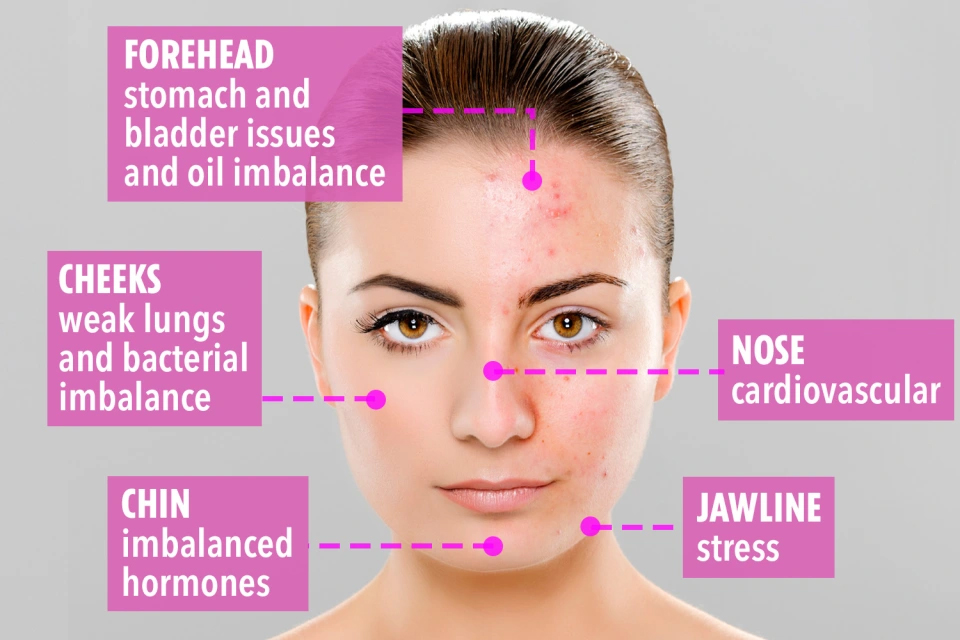
Dietary Choices Impacting Adult-Onset Acne
Nutrition plays a critical role in regulating the hormones that can cause adult-onset acne, so making wise dietary choices is essential. Certain foods are known to trigger hormonal imbalances that contribute to breakouts, while others help maintain gut health which plays an essential role in achieving clear skin.
Foods Known to Trigger Hormonal Imbalances Related to Adult-Acne
Some common culprits of foods that cause acne include dairy products and soy-based items. Dairy consumption has been linked with increased sebum production due to its hormone content, leading to clogged pores and breakouts. Soy contains phytoestrogens which may mimic estrogen in the body and cause hormonal fluctuations contributing towards acne formation. To minimize the risk of triggering adult acne through diet, consider reducing or eliminating these food groups from your meals:
- Dairy products such as milk, cheese, yogurt
- Soy-based items like tofu, tempeh, edamame beans
- Processed foods high in sugar or unhealthy fats
- Caffeine-containing beverages like coffee or energy drinks
Gut Health Connection with Clear Skin
Maintaining good gut health is another important aspect of preventing adult-onset acne. A healthy gut helps regulate hormones responsible for triggering breakouts while also supporting overall well-being. There are several ways you can improve your gut health:
- Eat a balanced diet: Consuming plenty of fruits, vegetables, whole grains, and lean proteins can help maintain a healthy gut environment.
- Include probiotics: Probiotics are beneficial bacteria that support gut health. They can be found in fermented foods like yogurt, kefir, sauerkraut or taken as supplements.
- Avoid excessive sugar intake: Sugar is known to feed harmful bacteria in the gut which may lead to imbalances and inflammation. Limiting your sugar consumption will promote better gut health and clearer skin.
Incorporating these dietary changes into your lifestyle not only helps prevent adult acne but also contributes towards overall well-being. By paying attention to what you eat and maintaining good gut health, you’ll be one step closer to achieving clear skin at any age.
Dietary decisions can significantly affect adult-onset acne, so it is imperative to recognize which foods may cause hormone discrepancies and how gut health affects skin clarity. Identifying root causes before treating adult onset-acne is essential for successful treatment outcomes; therefore, it is necessary to investigate all potential sources of this condition.
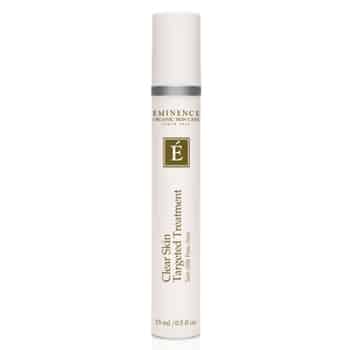
- Controls breakouts and blemishes.
- Eliminates impurities.
- Brightens skin.
- Reduces pores.
- Controls oil production.
- Diminishes redness and calms skin.
- Skin is left looking refreshed and brightened.
- Moisture is balanced, and skin looks smooth, hydrated, and radiant
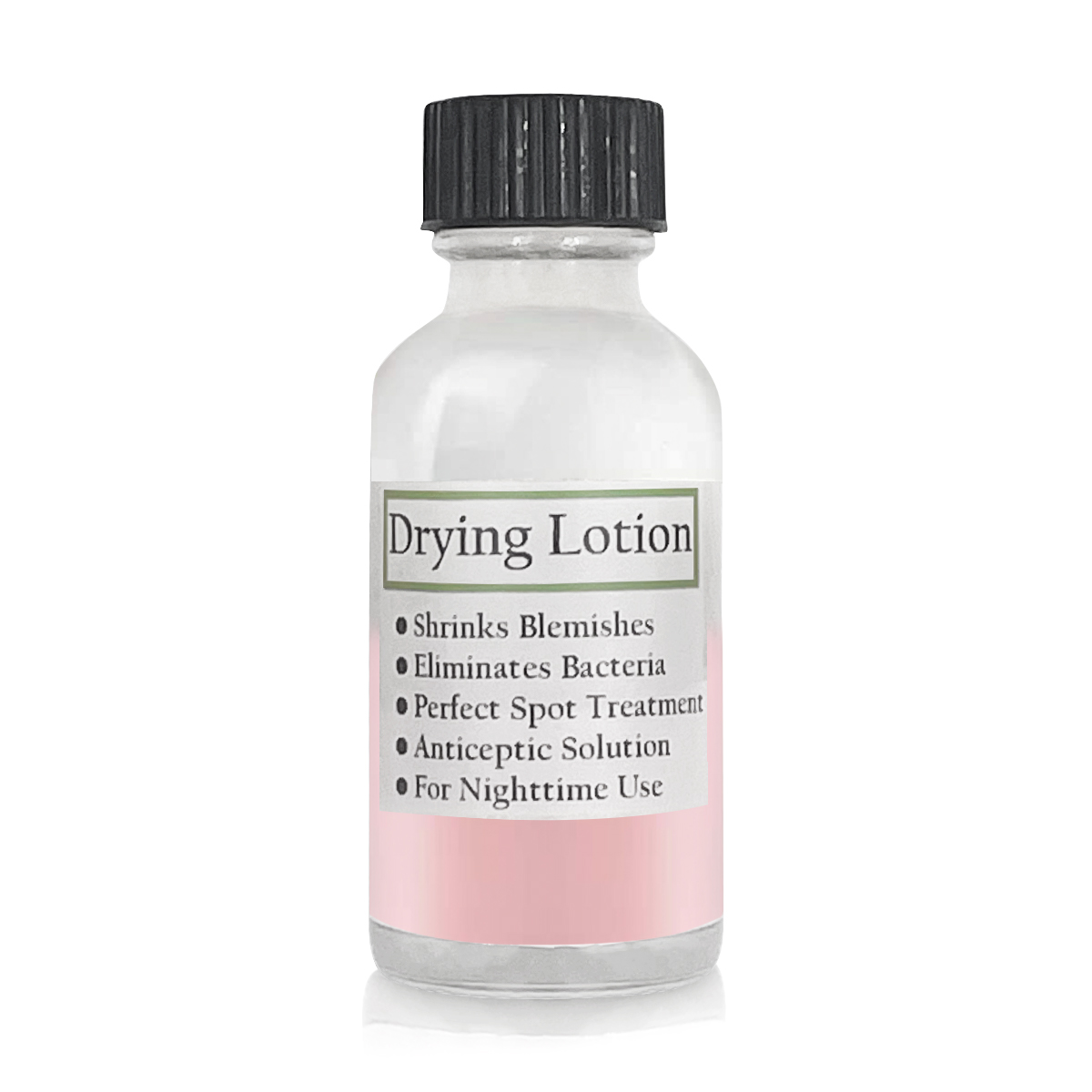
- Shrinks blemishes
- Eliminates bacteria
- Perfect spot treatment
- Antiseptic solution
- Quickly promotes healing
- Restores skin to a smoother texture.
- Use on spots and blemishes for nighttime use.
Identifying Root Causes Before Treating Adult Onset-Acne
To manage adult onset-acne effectively, it’s essential first to identify its root cause before adopting suitable treatments. This will ensure that you’re addressing the underlying issues rather than just treating the symptoms of acne. Identifying the source of adult-onset acne is essential for finding an effective treatment, so we’ll explore common causes and provide guidance on how to find a suitable solution.
Importance of Finding the Root Cause of Acne
Finding the root cause is crucial because different factors can contribute to acne formation in adults. These include hormonal imbalances, external irritants, dietary choices, and even certain medications or medical conditions. By identifying what’s causing your breakouts, you can tailor your skincare routine and lifestyle habits accordingly to prevent future flare-ups more effectively.
For example, if hormonal fluctuations are responsible for your acne-prone skin condition in adulthood; then using products designed specifically for balancing hormones may help treat and prevent further breakouts. Similarly, if a side effect from medication is causing your skin problems; consulting with a healthcare professional about alternative options might be necessary.
Treatment Options for Adult-Onset Acne
- Spironolactone: A medication primarily used for high blood pressure, has been found effective in treating hormonal acne by blocking excess testosterone production – one of the main culprits behind increased sebum secretion leading to clogged hair follicles.
- Benzoyl Peroxide: An over-the-counter topical treatment helps kill bacteria responsible for inflammation while unclogging pores by breaking down dead skin cells. However, it’s essential to start with a low concentration and gradually increase as needed to avoid potential skin irritation.
- Gentle Cleansing Routine: Using mild cleansers followed by warm water rinses twice daily without harsh scrubbing or overwashing can help maintain your skin’s natural balance while preventing further breakouts. Opt for items tailored to skin types vulnerable to acne, like those with salicylic acid or tea tree oil.
In addition to these treatment options, you may also want to consider incorporating chemical exfoliants, sun protection measures, and stress management techniques into your skincare routine – all of which can contribute significantly towards achieving clear skin at any age.
Identifying the source of adult-onset acne is essential before commencing any form of treatment, as this can guarantee that the most suitable remedies are being used for one’s skin type. A judicious blend of chemical exfoliants, like salicylic acid and other acids, can be beneficial for acne management.
Chemical Exfoliants and Their Role in Acne Management
Managing acne-prone skin requires a careful balance of exfoliation to remove dead skin cells, unclog pores, and promote cell turnover. Chemical exfoliants can be a great choice for those wanting to obtain clearer skin without causing any irritation or harm. In this section, we will discuss the benefits of salicylic acid and other effective chemical exfoliants that can help you maintain healthy, clear skin.
Benefits of Salicylic Acid for Acne-Prone Skin
Salicylic acid, a beta-hydroxy acid (BHA), is one of the most popular ingredients used in over-the-counter acne treatments due to its effectiveness in managing breakouts. It works by dissolving excess oil on your skin’s surface while penetrating deep into hair follicles to remove trapped dirt and debris. Additionally, it has anti-inflammatory properties that can help reduce redness associated with inflamed acne lesions.
- Gently removes dead skin cells: By breaking down the bonds between dead cells on your skin’s surface, salicylic acid promotes smoother texture and prevents clogged pores.
- Reduces inflammation: Its anti-inflammatory effects make it ideal for treating existing pimples as well as preventing new ones from forming.
- Promotes faster healing: As an exfoliant, salicylic acid helps speed up cell turnover rate which accelerates healing time for blemishes.
Other Effective Chemical Exfoliants to Consider
Besides salicylic acid, there are several other chemical exfoliants that can be beneficial for acne-prone skin. These include:
- Glycolic acid: An alpha-hydroxy acid (AHA) derived from sugar cane, glycolic acid is known for its ability to exfoliate the skin’s surface and stimulate collagen production. It helps improve overall texture and tone while reducing the appearance of acne scars.
- Lactic acid: Another AHA, lactic acid is gentler than glycolic acid but still effective in promoting cell turnover and brightening your complexion. It also has moisturizing properties which make it suitable for those with sensitive or dry skin types.
- Mandelic Acid: Derived from bitter almonds, mandelic acid is an AHA that works well on all skin types due to its larger molecular size which allows it to penetrate more slowly into the skin, resulting in less irritation. Its antibacterial properties make it a great option for treating acne breakouts.
When choosing a chemical exfoliant, consider your specific skin type, sensitivities, and desired results. Always start with lower concentrations of these acids before gradually increasing their strength as needed based on how your skin reacts over time.
For optimal acne management, chemical exfoliants should be used in combination with other treatments to reduce the visibility of breakouts. Sun protection is also essential for adults who suffer from acne; choosing the right sunscreen for your skin type will ensure that you’re adequately protected against UV damage while keeping breakouts at bay.
Sun Protection and Adult Acne Prevention
As you age, sun protection becomes even more crucial in preventing further damage to your skin. Regularly applying sunscreen not only prevents premature aging but also plays an integral role in achieving clear skin at any age. In this section, we will discuss the importance of sun protection for acne-prone skin and how to choose the right sunscreen for your skin type.
Importance of Sun Protection for Acne-Prone Skin
Exposure to ultraviolet (UV) rays from the sun can cause a myriad of issues such as wrinkles, fine lines, hyperpigmentation, and even skin cancer. For those with acne-prone skin, using adequate sun protection daily is essential to protect against these harmful effects.
- Prevents inflammation: UV radiation can trigger inflammation that may exacerbate existing acne or lead to new breakouts.
- Fades acne scars: Prolonged exposure to sunlight without proper protection can darken acne scars, making them more noticeable. Using sunscreen helps prevent this side effect while promoting an even complexion.
- Maintains effectiveness of treatments: Some ingredients found in common adult-acne treatments like benzoyl peroxide or retinoids may become less effective when exposed to sunlight. Wearing sunscreen ensures these products work optimally on your skin.
Choosing the Right Sunscreen for Your Skin Type
Finding a sunscreen that suits your skin type is crucial to ensure it provides adequate protection without causing further irritation or breakouts. Here are some tips on selecting the best sunblock for acne-prone skin:
- Opt for mineral-based formulas: Choose a zinc-based sunblock, as these tend to be less irritating and more suitable for sensitive or acne-prone skin. They also provide broad-spectrum coverage against both UVA and UVB rays.
- Avoid pore-clogging ingredients: Look out for non-comedogenic products that won’t clog your pores, ensuring they don’t contain any heavy oils or occlusive agents that can worsen acne.
- Select an SPF of at least 30: Dermatologists recommend using sunscreen with an SPF of at least 30 to effectively protect against harmful UV radiation. Reapply every two hours outdoors, especially during peak sunlight between 10 am and 4 pm.
Making sure to include proper sun protection in your skincare regimen can help guard against adult acne and keep your skin looking youthful. Remember to always wear sunscreen, even on cloudy days since up to 80% of UV rays can penetrate clouds. Adopting these steps can help ensure your skin remains clear and healthy for the long haul.
Sun protection is an essential part of any adult acne prevention routine. By following a regular sunscreen and skincare regimen, you can help maintain healthy skin for years to come. To further support long-term clarity, it’s important to consider lifestyle factors that may contribute to breakouts in adults.
Lifestyle Habits That Help Prevent Adult Acne Breakouts
It’s important not only to focus on treating existing breakouts but also implementing preventive measures such as avoiding touching your face, using oil-free noncomedogenic moisturizers and sunscreen, stress management techniques, and maintaining healthy lifestyle habits. Ensuring overall well-being plays an integral role in achieving clear skin at any age.
Stress Management Techniques That Can Improve Your Complexion
Stress is a common trigger for adult acne, as it can cause hormone fluctuations that lead to increased sebum production. Incorporating stress management techniques into your daily routine can help reduce the likelihood of breakouts:
- Meditation: Practicing mindfulness meditation has been shown to decrease cortisol levels and promote relaxation.
- Exercise: Regular physical activity helps release endorphins, which are natural mood elevators that combat stress hormones.
- Sleep: Prioritizing quality sleep ensures proper hormonal balance and supports overall health.
- Breathing exercises: Deep breathing exercises like diaphragmatic breathing or alternate nostril breathing can lower stress levels by activating the parasympathetic nervous system.
Tips for Creating a Skincare Routine That Supports Long-Term Clarity
A consistent skincare routine tailored to your specific needs is crucial in preventing adult-onset acne. Consider these tips when creating a personalized regimen for optimal results:
- Determine your skin type (oily, dry, combination, or sensitive) and choose skin care products accordingly.
- Twice a day, use a mild cleanser to remove dirt, grease, and cosmetics without too much drying out the skin.
- Use chemical exfoliants such as salicylic or lactic acid to prevent blocked pores and stimulate cell renewal. Avoid harsh physical scrubs that can cause irritation and make acne worse.
- Moisturize daily with an oil-free, non-comedogenic moisturizer to maintain hydration levels in the skin without causing breakouts.
- Treat existing acne with topical treatments such as benzoyl peroxide or retinoids after consulting a dermatologist for appropriate recommendations based on your specific needs.
- Protect your skin from sun damage by applying zinc-based sunscreen every day. This not only prevents premature aging but also plays an integral role in achieving clear skin at any age.
Incorporating these lifestyle habits into your routine will help you manage adult-onset acne more effectively while promoting overall well-being for healthier-looking skin throughout life’s stages.
Frequently Asked Questions Why You Are Getting Acne in Your 40S
Why have I started getting acne in my 40s?
Acne in your 40s can be caused by hormonal changes, stress and anxiety, diet and nutrition, medication side effects, or using inappropriate skin care products. As we age, our hormones fluctuate, which may lead to increased oil production and inflammation that contribute to breakouts.
How do I stop getting pimples in my 40s?
To prevent pimples in your 40s, maintain a healthy diet with balanced nutrition habits, manage stress effectively through relaxation techniques or exercise routines, avoid certain skin care products that clog pores or irritate the skin, and consider consulting a dermatologist for personalized treatment options.
Why am I getting acne at 45 years old?
At the age of 45 years old you might experience acne due to factors such as hormonal fluctuations during perimenopause or menopause (for women), increased stress levels from life events like career changes or family issues affecting both genders, poor dietary choices; medications causing side effects on the skin; and using unsuitable skincare products.
Why do I still get acne in my 40s men?
In men aged over forty who are experiencing adult-onset acne, it is often attributed to factors including hormone imbalances leading to excessive sebum production; high-stress levels impacting overall health negatively contributing towards breakouts occurring more frequently than before; unhealthy diets lacking essential nutrients needed for optimal function of bodily systems including maintaining clear complexion without blemishes appearing regularly throughout middle-age stages onwards into later life periods too.
Conclusion
When dealing with acne in your 40s, taking the necessary steps to manage it is essential. With the right treatments and prevention techniques, you can keep breakouts under control. If home remedies don’t seem to work for you, then make sure to consult a doctor who will be able to provide more specific advice on how best manage your condition.
If you’re experiencing acne in your 40s, don’t despair. Organic skin care products and routines can help restore your complexion with the latest natural ingredients.
The most important details in this text are that acne is a skin condition with many different factors that all culminate in the root cause, which is a problem with the skin cells lining the pore they don’t differentiate. This is a skin condition where many different factors play a role that all culminate in the root cause, which is a problem with the skin cells lining the pore. They don’t differentiate. This is a skin condition where many factors play a role in the root cause, a problem with the skin cells lining the pore. They don’t differentiate. The most critical details in this video are that perimenopause and menopause can lead to various skin and hair changes, including acne, hair loss, and hirsutism. It is essential to have a good doctor-patient relationship, as it can help to address any underlying issues that may be contributing to the symptoms of perimenopause and menopause, such as iatrogenic hyperandrogenism, insulin resistance, congenital adrenal hyperplasia, and a tumor in the ovary or an ovarian tumor that secretes androgens.


